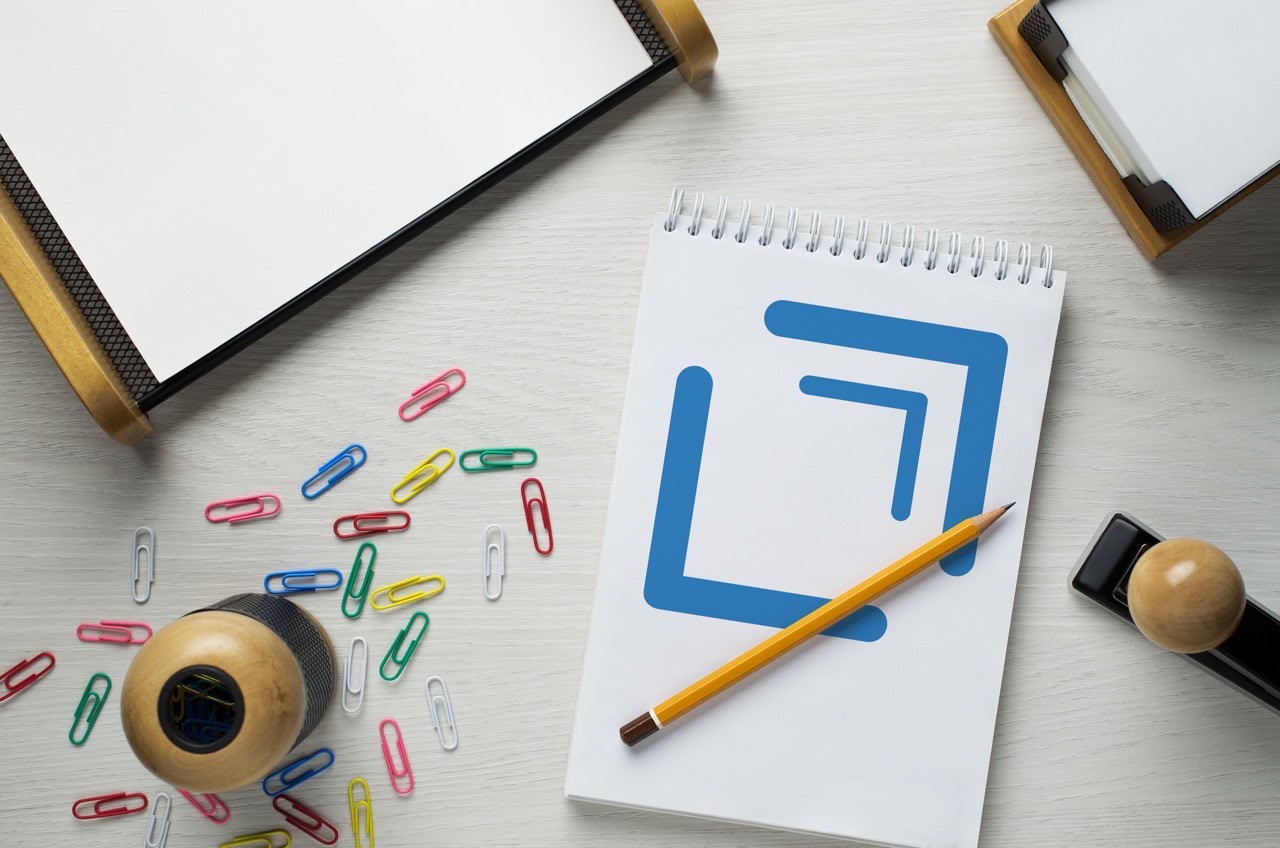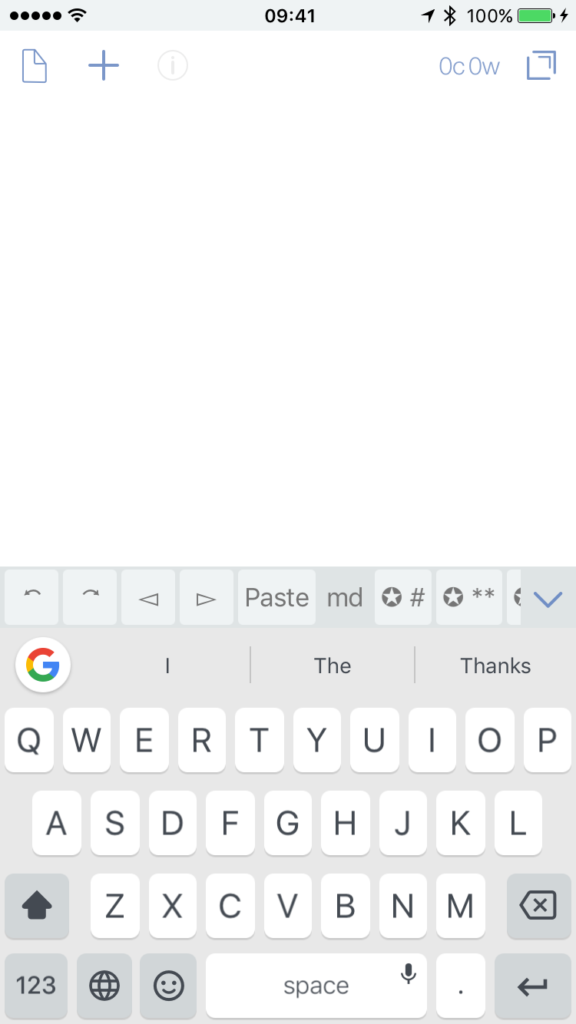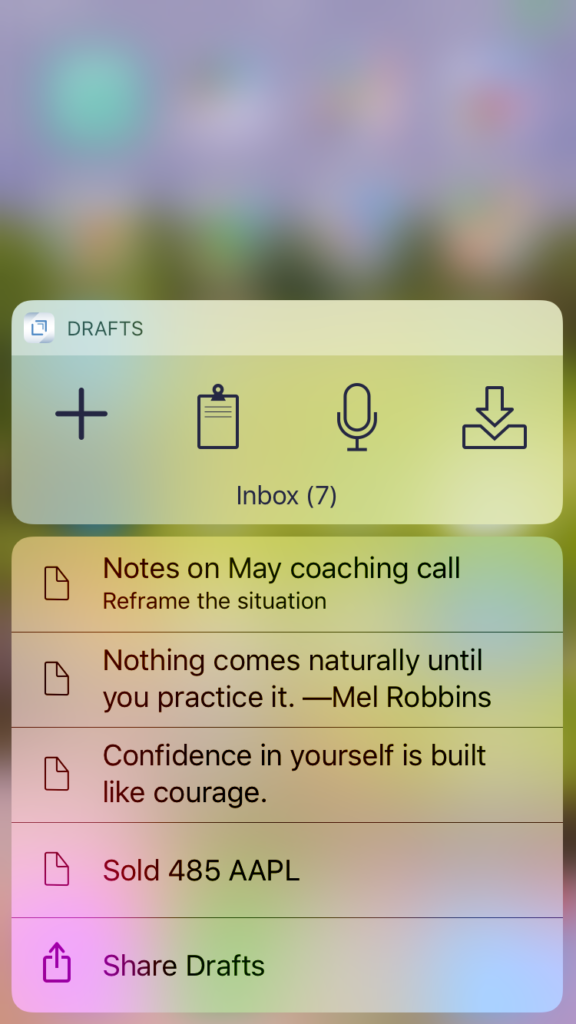Think of the following paper-based workflow: you’re working at your desk when an idea comes to you. Maybe it’s something you need to do, someplace you need to be, a book you want to read, a new recipe you want to try this weekend, or a character trait you want to develop. Whatever it is, you don’t want to forget it, but now is not the right time for it.
You reach for a slip of paper from a small stack you keep next to your inbox tray on the corner of your desk. You write down the idea, put the slip in the inbox tray where you can process it later, and get back to work.
It’s textbook GTD. Your brain had an idea. Instead of trying to hold it there until it was time to act on it, you wrote it down to process it later. Mind like water.
It’s a clean and simple workflow. If you plan digitally, there’s an app for that! Meet Drafts, the unusual text editor for iOS from Agile Tortoise.
Drafts is not your run-of-the-mill text editor. Instead of a general-purpose text editor, it’s specifically designed to let you capture notes quickly and get back to what you were doing.
When you open the app, it creates an empty note for you. Capturing an idea is as simple as opening the app, typing your idea, and going back to what you were doing. Drafts will leave the note in its inbox where you can process it later during your next daily or weekly review.
Its quick-capture alone makes it useful, but its power lies in what you can do with those notes after you capture them. Drafts has an extensible library of actions you can perform on a note (either now or later). With some of the built-in actions, you can:
- copy the text to the clipboard with a tap, either as-is or after applying Markdown formatting to create styled text
- share as a post on social media
- create, append, or prepend to a file (or note) on Dropbox, iCloud Drive, Evernote, Google Drive, Box, and OneDrive (that pretty much covers everything I use)
- create a reminder, calendar event, or email message using Reminders, Calendar, and Mail
There are more. Two of the more powerful options are running a JavaScript and opening a URL, which lets you integrate with a large number of third-party apps. If you’re not a scripter yourself, check the Action Directory, a gallery of user-submitted scripts; there’s a good chance someone else has written an action that will do what you want. (There are actions in the Directory for working with OmniFocus, Fantastical, AirMail, and Spark, for example.)
Drafts is well-integrated with iOS. It has a Today widget where you can see the number of notes in your Inbox, open the apps to an empty note, create a note from the clipboard, or start dictating a note. You can also access those quick-start actions through a 3D touch on the app icon. A share extension lets you send text to Drafts from anywhere you have a selection. There’s also an app for Apple Watch that lets you create and review notes from your wrist. (It’s earned one of the spots on my watch face.)
Drafts solves one of the frequent problems I have when I’m trying to capture notes: my brain competes with itself for resources. My right brain has an idea and it wants to start writing it down. My left brain wants to push the thought aside long enough to figure out what application I need to capture it in and my right brain is afraid it will lose the thought if it has to share the mental bandwidth.
Without Drafts, your left brain is going to win every time. It has to, even if it puts your idea at risk of being forgotten. (It happens, believe me.) Drafts lets your right brain win. You don’t have to start classifying the idea before it’s captured. Just launch Drafts and capture it! Once your right brain is happy and the idea is safe, your left brain is free to process it. It’s an interesting shift in behavior that makes an unexpected difference. You’ll be surprised at how quickly you start reaching for Drafts anytime you need to start writing something down.
Question: What ideas do you capture on the go? Share your thoughts in the comments, on Twitter, LinkedIn, or Facebook.




